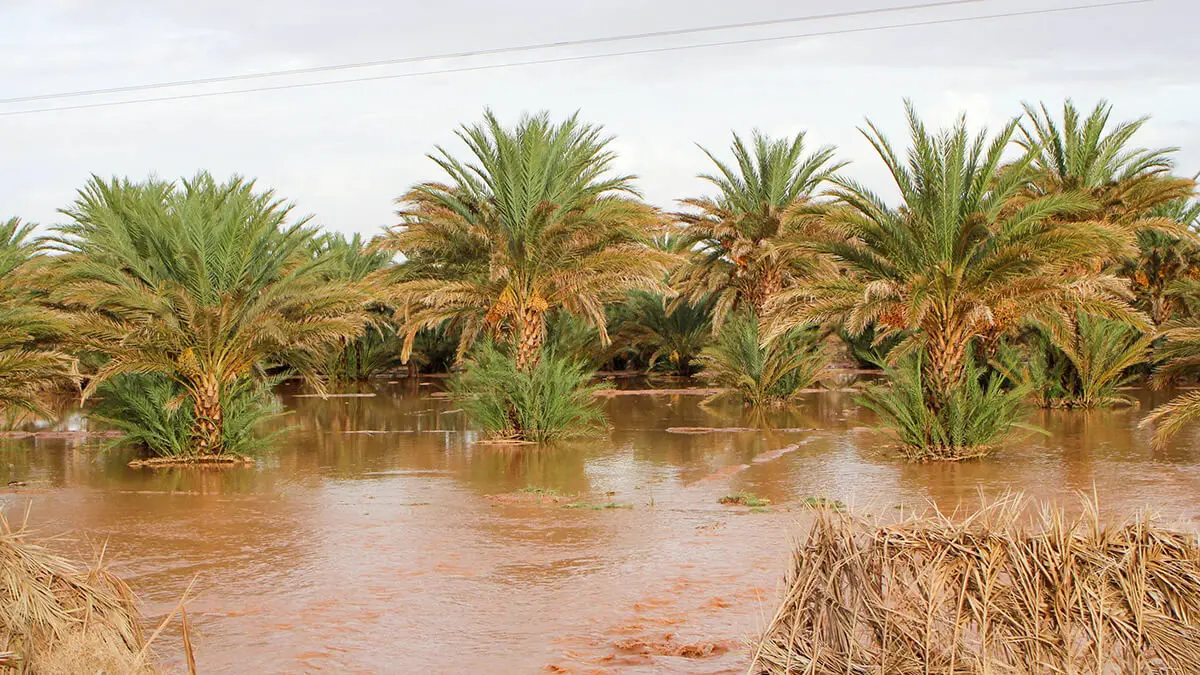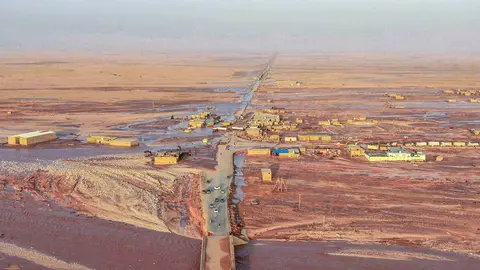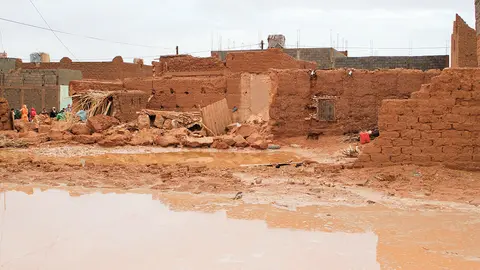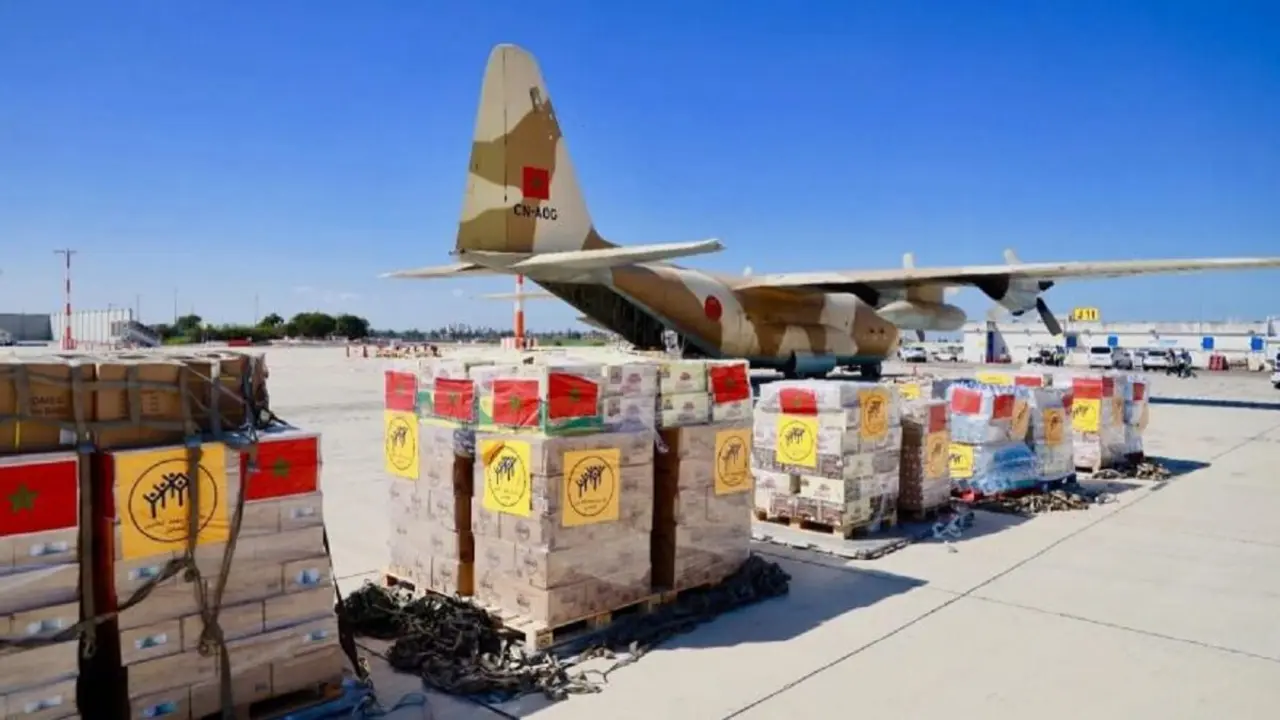Sahara desert floods for first time in 50 years

- A devastating sign of things to come
- Future of the region depends on the impact of climate change
- Storms will lose their status as climatic anomalies
The Sahara Desert, at 9.4 million square kilometres, is the largest hot desert in the world. It stretches across a wide swathe of North, Central and West Africa. Drought and an increase in extreme weather events, caused by global warming, are affecting several countries.
Scientists warn that unusual storms could recur in the future. Exceptional rainfall in southeastern Morocco caused the first flooding in the Sahara desert in more than half a century, which has stunned experts and meteorologists around the world.
🛰️ Imágenes de la NASA revelan la formación de lagos en el Sáhara tras las intensas lluvias de septiembre. Estos cuerpos de agua, visibles en zonas como el Parque Nacional Iriqui en Marruecos, resaltan la magnitud de este evento extraordinario 🧵
— Fénix Canarias (@FenixCanarias) September 21, 2024
Comparativa Agosto-Septiembre pic.twitter.com/rzX4WZfsqs
According to Morocco's meteorological agency, the southeast of the country received more rain in two days than it gets all year. Tagounite, a town south of Rabat, experienced an unprecedented amount of rainfall for this time of year. More than 100mm fell in 24 hours, a situation unheard of in decades.
As Houssine Youabeb, an agency worker, said, it has been decades since such a short period of rainfall has been recorded in such a short period of time. One of the most striking examples is the ‘rebirth’ of Lake Iriqui, which had been dry for 50 years.
A devastating sign of things to come
In Chad, storms have left more than 1.5 million people displaced and more than 340 dead during the summer months alone. In Nigeria, displaced people number in the hundreds of thousands and the death toll stands at 220. In Sudan, more than 132,000 homes have been destroyed leaving more than 3 million people homeless and more than 130 people have lost their lives to flooding.
Floods in The Sahara Desert in Morocco.
— MISS PRESIDENT (@Ms_ppresident) October 10, 2024
Sahara Desert is one of the driestest places in the world.
📷 AP. pic.twitter.com/hvLXK1NnGL
Flooding in Derna, Libya, in September 2023 left more than 11,300 people dead, ranking it as the worst flooding in Africa in 100 years, according to Yale Climate Connections. Storm Daniel impacted the east coast of Libya and caused severe flooding, considered the worst in Africa in a century.
Essam Heggy, a scientist at USC's AWARE Center, said erosion, sediment and deteriorated dams were causes of the collapse of water infrastructure in Derna, worsening the damage from the heavy rains.
The authors of the study highlighted the worrying fragility of drylands in the face of increased extreme weather events due to climate change. Over the past ten years, the Sahara Desert has experienced an increase in arid conditions and strong coastal storms.
First floods in the Sahara in half a century
— Science girl (@gunsnrosesgirl3) October 12, 2024
pic.twitter.com/i0zgn0KVXo
Future of the region depends on the impact of climate change
Climate change is transforming arid landscapes into green zones and is also affecting the Atlantic hurricane season, which has had a significant impact on several African countries in recent months. Countries that need more rainfall are receiving less, as storms are moving northwards.
These phenomena are explained by the widening of the areas between the tropics of Capricorn and Cancer. The widening of this region of the planet, which covers more than 30 % of the surface, is causing storms to move northwards through the Tropic of Cancer and southwards through the Tropic of Capricorn. This opens the possibility of increasing the frequency of such weather anomalies for the time being.
The extra-tropical storms, known as this type of phenomena, changed the appearance of the Sahara in a short time, and could alter the climate of the area in the coming months or years. Due to rising temperatures, the water cycle has become faster.
Floods in Morocco's #SaharaDesert for the first time in 50 years after extremely rare deluge#Flood #Africa #Morocco #Sahara #Desert #Rain #Climate #Weather #Viral pic.twitter.com/XKXhtNhuhC
— Earth42morrow (@Earth42morrow) October 12, 2024
Floods in the Sahara have transformed the landscape and shown the impacts of climate change in a generally arid area. Experts believe that extreme events like this could occur more frequently in the future due to rising global temperatures, causing more moisture in the air and making it easier for storms to form in places where they were previously rare.
Among the main victims of this series of changes is the Central American region. Increased vegetation in a region as hot as the Sahara will affect the Atlantic Ocean by increasing cloud cover and temperature changes that will generate winds and storms with unprecedented potential. Hurricanes and storms such as Kirk in western Europe or Milton in Florida will become more frequent and powerful.
Storms will lose their status as climatic anomalies
Desertification has led to more droughts, and storms have increased in the eastern Mediterranean due to warming seawater. Heggy said it is important to use advanced satellites to monitor arid watersheds to reduce risks in areas such as the Sahara, the Arabian Peninsula and other deserts.
In many countries, drought is a recurring problem due to the increase in extreme weather events caused by global warming. Scientists believe that more storms like last month's in the Sahara are likely to occur in the future.
These images, captured by #VIIRS onboard the #NOAA21 satellite on Aug. 30 and Sept. 9, 2024, use enhanced color to highlight rain accumulation in the Sahara Desert.
— Joint Polar Satellite System (JPSS) (@JPSSProgram) September 13, 2024
Clouds are shown in light cyan, while water is dark blue to indicate moisture content.
Credit: @NOAA/@CIRA_CSU pic.twitter.com/SkFsuUPfJb
World Meteorological Organisation secretary-general Celeste Saulo told reporters on Monday that water cycles around the world are changing more frequently. Because of the heat, the water cycle has accelerated. She said the climate has become more unpredictable and we face increasing problems of water surplus or shortage.
These changes in climate can have positive or negative consequences. Rainfall could recharge underground aquifers, essential for desert communities, and ensure a more stable water source.
Another concern is that extreme events will cause more problems than solutions, as flash floods can cause crop and housing losses in areas with little infrastructure to handle large amounts of water, as has already happened in several affected areas.










